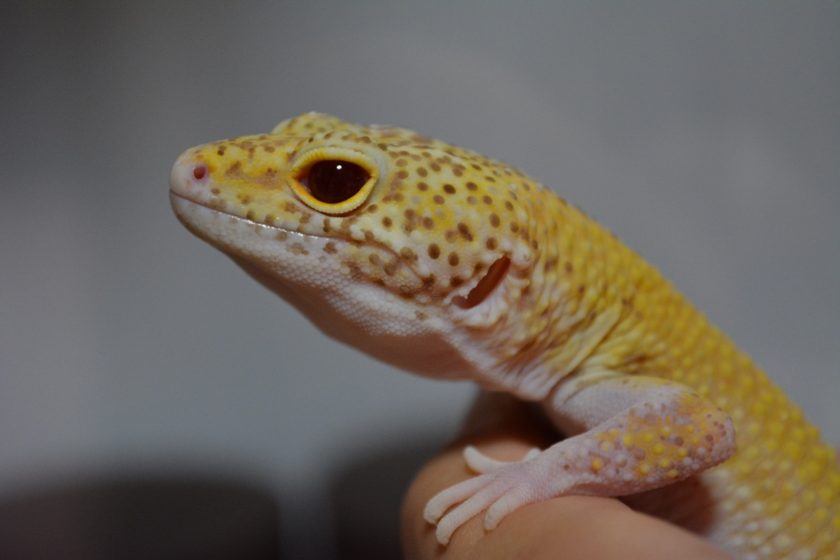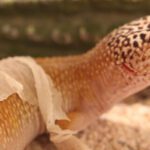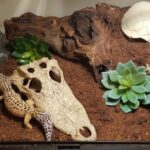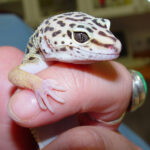Fluid treatment, also known as fluid therapy or fluid resuscitation, is crucial for dehydrated Leopard geckos. This medical practice involves replacing lost body fluids to stabilize the gecko’s health. Key factors in fluid treatment include the timing, type, and quantity of fluid administered, as well as the chosen route of administration.
When applied properly, fluid treatment can be life-saving, particularly in cases of severe dehydration.
Water is essential for all living creatures, including Leopard geckos. Research shows that reptiles generally have a higher percentage of total body water (TBW) than mammals, with reptiles averaging up to 75% while mammals hold around 60-70% TBW. In Leopard geckos, TBW is distributed between intracellular fluid (ICF) and extracellular fluid (ECF).
The ICF accounts for roughly 66% of the total body water, while the ECF covers the remaining 33%. Water moves freely within these compartments, supporting critical bodily functions.
Over the past few decades, significant advancements have been made in understanding fluid treatment for reptiles, including Leopard geckos. Like mammals, such as cats and dogs, Leopard geckos have benefitted from medical techniques to correct dehydration, improving their survival rates during life-threatening conditions.
While gecko owners may attempt basic rehydration at home, specialized veterinary knowledge and equipment are often necessary for effective treatment.
Table of Contents
Causes and Types of Fluid Loss in Leopard Geckos
Leopard geckos can experience fluid loss due to trauma, bleeding, or dehydration. Trauma-related blood loss is usually acute (occurring over a short time), while dehydration typically results from chronic issues, such as an inability to intake sufficient fluids over time.
Chronic dehydration may stem from decreased red blood cell production or other underlying health issues. Addressing both acute and chronic fluid loss requires different treatment approaches.
Before initiating fluid treatment, it’s essential to identify the root cause of the fluid loss. Dehydration and blood loss should be addressed before feeding, even if this takes several days. Ensuring normovolemia, or a balanced fluid level, is also vital before focusing on other organ systems, as hydrated patients respond more effectively to other treatments.
The principles of fluid treatment in Leopard geckos mirror those used for mammalian patients, focusing on stabilizing fluids to prevent organ failure and other complications.
Quick Guide to Shock Treatment in Leopard Geckos
In cases of extreme dehydration or severe blood loss, Leopard geckos may require shock treatment. Types of shock that can affect Leopard geckos include hypovolemic (due to fluid loss) and septic (due to infection) shock.
Unlike mammals, reptiles can maintain hemodynamic stability even after significant blood loss. This resilience is due to their ability to quickly shift interstitial fluid into the vascular space, compensating for the blood volume loss.
When a Leopard gecko is in shock, clinical signs often include weakness, hypothermia (especially in limbs), prolonged capillary refill time, pale mucous membranes, and abnormal heart rates (tachycardia or bradycardia). For shock treatment, veterinarians recommend administering a combination of crystalloids and colloids.
Common isotonic crystalloids include 0.9% physiological saline, Plasma-Lyte A, Normosol-R, and Lactated Ringers solution. These can be given at a rate of 5-10 ml/kg, followed by 3-5 ml/kg of a colloid solution (such as 10% HAES-steril).
These solutions are typically administered through the interosseous route as a slow bolus over 5-10 minutes, helping to quickly stabilize the gecko.
Before administering shock treatment, it’s advisable to place the gecko in an enclosure set to an optimal temperature range of 25-30 ºC (77-86 ºF). Allow at least 30 minutes for the gecko to acclimate, which also enables resuscitation fluids to be pre-warmed to prevent additional stress on the gecko’s system.
Understanding Dehydration in Leopard Geckos
Dehydration occurs when fluid loss surpasses intake, leading to a body fluid deficit. Daily fluid loss is a natural occurrence for all animals, including Leopard geckos, as fluids are lost through processes like breathing, skin evaporation, urination, and defecation.
In normal conditions, these fluid losses are replenished through food and water intake, with food containing a considerable amount of water.
Several factors can lead to dehydration in Leopard geckos, including illnesses, physical conditions, and husbandry issues. For example, diseases causing a lack of appetite, diarrhea, or vomiting can result in significant fluid loss.
Physical limitations, such as injuries or metabolic disorders, may prevent a gecko from consuming enough water or food. Improper husbandry, such as inadequate temperature and humidity levels, can further contribute to dehydration.
It important to note that during shedding, Leopard geckos are especially vulnerable to dehydration as their bodies require extra moisture to facilitate the skin-shedding process.
Estimating exact hydration levels in Leopard geckos is challenging, especially since dehydration may not be obvious until it’s advanced.
Clinicians often classify dehydration levels as normal to mild, but it’s crucial to recognize early signs, which can prevent severe fluid deficits and related health issues.





